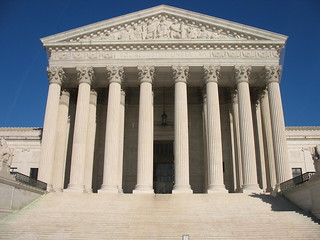Hollywood Producer Scott Budnick has spent a decade dedicating his energies to creating opportunity for incarcerated youth. It all started in 2002 when he became part of an innovative program called InsideOUT Writers.
The program conducts weekly writing classes within the Los Angeles County Juvenile Hall System. Classes that are taught by prominent writers, poets, screenwriters, journalists and educators. It is a combination of education and narrative, one that provides the inmates a forum in which to tell their personal stories and re-examine the past. Its goal is to help them write the next chapter of their own story, hopefully a better one.
Budnick is part a team inaugurated by Los Angeles Times staff writer Duane Noriyuki and Pulitzer Prize nominee Mark Salzman, two of the original teachers.
Fast forward to the present day. Here is an encapsulated view of how Budnick has taken his work on InsideOUT as the foundation for even more ambitious work along these lines. (Quoted from the California Department of Corrections and Rehabilitation website.)
After volunteering with the InsideOUT program for several years, Budnick turned his attention to young adults in the state prison system. He noticed that young adults moving from the Division of Juvenile Justice (DJJ) to one of the 33 adult institutions were not classified any differently than hardened career criminals. In 2008, Budnick approached CDCR Undersecretary Scott Kernan with the argument that the system was turning kids into worse criminals and it was time to try something new.
This alone is a breakthrough. Every reputable study out there supports the stance that adult facilities tend to simply be “crime school” for juveniles incarcerated within.
Budnick, along with Undersecretary Kernan and Tanya Rothchild of the Classification Services Unit, developed a pilot for the Youth Offender Classification Program at California Institution for Men (CIM) in Chino. The program created a system that classified youth entering the adult prison system based on behavior, wants and needs rather than by age and offense.
The program was a success, with hundreds of young adults enrolled in college courses at several CDCR adult institutions in Southern California. The programs included mentoring and a college-dormitory environment more conducive to learning than a typical prison environment.
Due to CDCR’s inmate population reduction, CIM’s East Facility was converted from a reception yard to a Level III Sensitive Needs Yard (SNY) that includes inmates who have denounced gang affiliation and want to turn their lives around. Budnick and CDCR officials envisioned the conversion as the perfect spot for a special program in which all of the inmates are enrolled in college courses. Within a month of the conversion and the program start-up, there were 225 inmates enrolled in college courses.
Education is one of the leading ways to combat recidivism. It provides the tools needed to re-enter normal society by incubating job skills and discipline. Every step we can take to improve access to education is a step toward eliminating problems like homelessness and juvenile crime.
The program’s effectiveness in this regard is amply illustrated by it’s continued expansion and success.
To enhance the program further, Budnick contacted Professor Renford Reese of the political science department at California State Polytechnic University, Pomona. Reese engaged students at Cal Poly Pomona campus and now has about 80 students coming into the CIM yard on a weekly basis for tutoring, mentoring, life-skills presentations, presentations about their majors and inter-disciplinary studies.
Programs and strategies like this are proven to be effective. They allow juvenile inmates a much better chance of staying out of prison once released.
Curious about what these kids are writing? InsideOUT Writers publishes a quarterly literary journal of writings that is distributed to students and probation staff, a journal that is available for download on their website (click on Writing From the Inside).
Related articles
- A Conversation with the National Juvenile Justice Network (humidcity.com)
- Miranda, Hearing Juveniles and Deaf Juvenile Offenders (childreninprison.wordpress.com)
- Georgia looking at ways to reform juvenile justice system (onlineathens.com)
- Former inmate alleges unsafe conditions at old Natrona County juvenile detention center (billingsgazette.com)
- Who gets paid? Juvenile inmates display sought-after artwork (kens5.com)
















